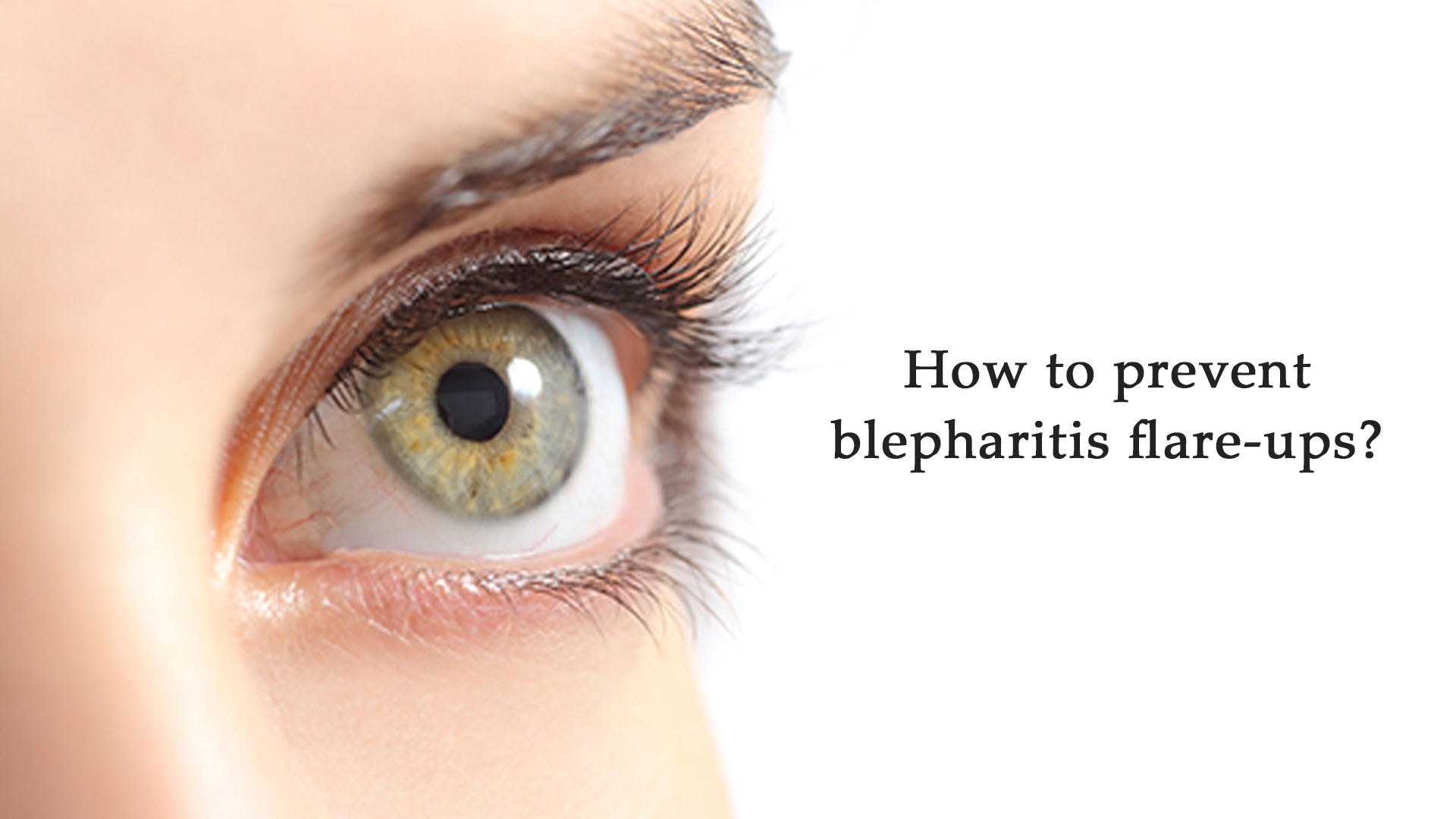How to prevent blepharitis flare-ups?

The eyes are the most sensitive part of the body. If you are prone to eye infections, you need to monitor the triggers with prevention techniques to avoid flare-ups. One such infection which we are going to address today is “BLEPHARITIS FLARE-UP.” Blepharitis flare-up can be a recurrent chronic issue that needs to be taken care of with precautionary measures.
Let us provide you with some insights on causes, symptoms, solutions, and prevention measures for flare-ups of blepharitis.
All you need to know about blepharitis flare-ups
Although there is no known cure for blepharitis, it can be managed well with prevention and precautionary measures by maintaining good hygiene conditions for the eye. No matter how much care you might take, some triggers may aggravate the blepharitis flare-up. It is important to be aware of the blepharitis triggers to ensure proper protection of the eyes.
Let us check out some common triggers of blepharitis flare-ups.
Triggers for blepharitis
The common triggers for blepharitis are as follows-
- Oily skin and lids
- Rosacea
- Allergies that affect your eyelashes
- Dandruff - flaky patches on the scalp and face
- Using eye makeup
Once you know about the risk factors, you can take precautions by keeping the triggers at bay to maintain the healthy condition of the eyes.
How does blepharitis occur?
The main reason for the blepharitis issue is the presence of bacteria on the eyelids or at the base of the eyelashes. Skin flora refers to the microbiota that is always present on the human skin. Most of the skin microbiota is present on the superficial layer of the skin and the upper part of the hair follicles.
Once the skin immunity gets compromised, these resident bacteria may start multiplying or colonizing the skin causing infections of the hair follicles. This can result in the stimulation of sebaceous (oil-secreting glands) causing an increase in sebum production which may trigger the infection of the eyelids due to the multiplication of bacteria. This may result in blepharitis.
Common bacteria causing chronic blepharitis
The most common bacteria causing chronic blepharitis are as follows-
- Staphylococci
- Corynebacterium
- Propionibacterium species
These bacteria remain in the dormant phase on the skin or hair follicles of eyelids and lashes without causing harm and are known as the “skin microbiota.” However, once the immunity gets weakened or the skin barrier functioning gets affected, these bacteria may get activated causing a condition of eyelids known as “Blepharitis.”
In order to prevent the recurrence of blepharitis, it is important to avoid the above-mentioned triggers to prevent blepharitis flare-ups.
How to recognize blepharitis flare-ups?
Blepharitis flare-up is a common eye condition that makes your eyelids red, swollen, irritated, and itchy. It can cause crusty dandruff-like flakes on your eyelashes.
Blepharitis flare-ups can be uncomfortable. However, it is important to note that blepharitis is not contagious.
It is important to prevent the recurrence of blepharitis to avoid complications of eye problems in the future and maintain better eye health.
Complications for blepharitis
The recurrent blepharitis flare-ups can cause eye problems which include the following-
- Stye - A red painful bump on the eyelid caused by a blocked oil gland
- Chalazion- A hard painless bump on the eyelid which is caused by blocked glands
- Chronic red eye- This occurs when the eye looks red and feels itchy all the time
- Dry eye syndrome- This occurs when the tear film of the eye is damaged due to oiliness or flakiness causing the eyes to feel dry.
- Damage to the cornea- This occurs in severe cases of blepharitis leading to swelling and irritation of the eyes.
Prevention of recurrent blepharitis flare-ups
It is important to regularly clean your eyelids to prevent infection. Blepharitis usually does not go away completely. It is important to take preventive steps to avoid the trigger of eyelid infection by maintaining proper hygiene of the eye.
Let us check out prevention tips and solutions for blepharitis flare-ups.
- Keep hands and face clean
- Do not touch the face, eyes, mouth, or nose too frequently to avoid cross-contamination
- Remove all the makeup before bedtime with a natural gentle makeup remover
- Resist the urge to touch an itchy face or eye
- Avoid eye makeup in case of active blepharitis or eyelid infection
- Wear glasses instead of contact lenses during blepharitis flare-ups
- If you are prone to blepharitis, use minimalistic eye make-up
- Keep your scalp clean to avoid dandruff issues and itchy scalp
- Use gentle face cleansers and avoid harsh soaps or cleansers
- Maintain optimum skin immunity with a healthy diet and exercise
- Regularly replace your beauty essentials for eye and face post-infection to avoid flare-ups or recurrence
- Ensure to check the expiry date of your beauty essentials
Follow these steps to keep blepharitis flare-ups at bay. Remember, beauty essentials can help enhance beauty at its best. Use it wisely and appropriately to enjoy healthy eyes and beautiful looks!!